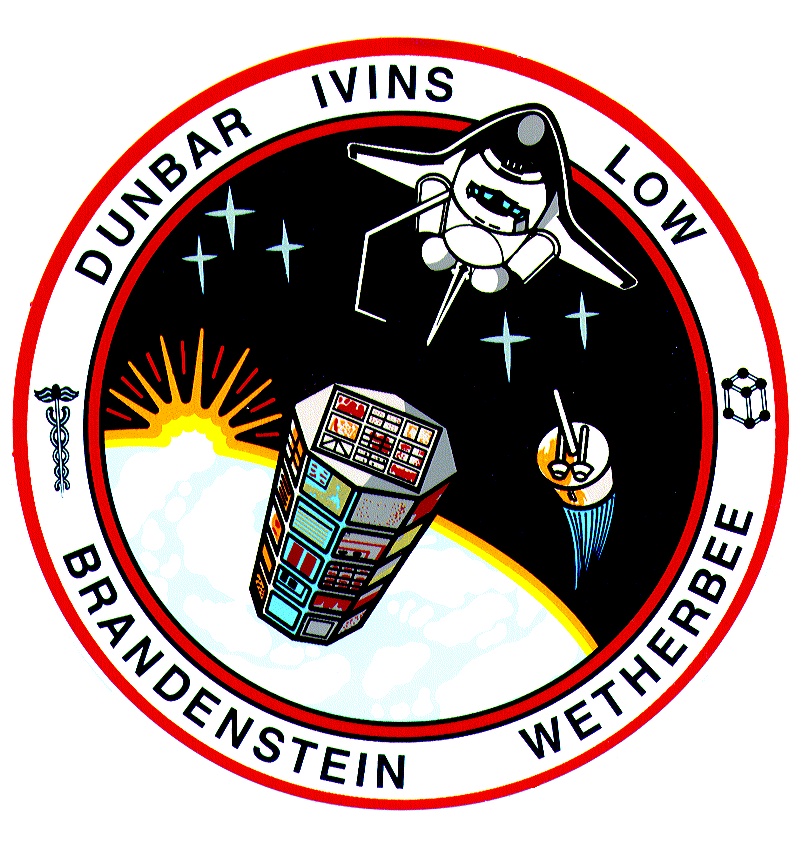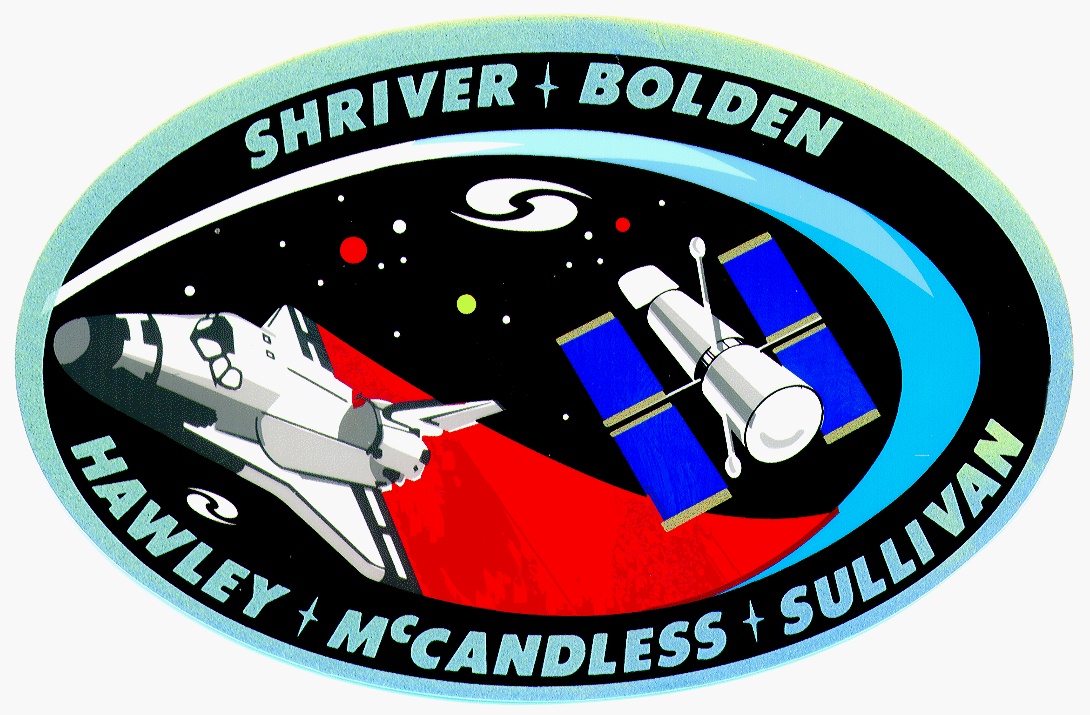Twenty years ago today — January 11, 1990 — Space Shuttle Columbia retrieved the Long Duration Exposure Facility (LDEF) as one of the key objectives of mission STS-32.

(STS-32 mission patch. NASA image. Click to enlarge.)
Columbia had launched on January 9th from the Kennedy Space Center, carrying astronauts Daniel C. Brandenstein, James D. Wetherbee, Bonnie J.Dunbar, Marsha S. Ivins, and G. David Low. The astronauts deployed the defense communications satellite Syncom IV-5 shortly after achieving orbit, then maneuvered the shuttle for the rendezvous with the LDEF.

(Long Duration Exposure Facility at the end of the shuttle’s manipulator arm. NASA image from Wikimedia Commons.)
According to this LDEF archive site,
NASA’s Long Duration Exposure Facility (LDEF) was designed to provide long-term data on the space environment and its effects on space systems and operations….
LDEF had a nearly cylindrical structure, and its 57 experiments were mounted in 86 trays about its periphery and on the two ends. The spacecraft measured 30 feet by 14 feet and weighed ~21,500 pounds with mounted experiments, and remains one of the largest Shuttle-deployed payloads….
LDEF was deployed in orbit on April 7, 1984 by the Shuttle Challenger. The nearly circular orbit was at an altitude of 275 nautical miles and an inclination of 28.4 degrees…. LDEF remained in space for ~5.7 years and completed 32,422 Earth orbits…. It experienced one-half of a solar cycle, as it was deployed during a solar minimum and retrieved at a solar maximum.
And what made its recover “just-in-time” was the fact that it was about to fall from the sky.
… By the time LDEF was retrieved, its orbit had decayed to ~175 nautical miles and was a little more than one month away from reentering the Earth’s atmosphere.
Shuttle Columbia landed with the LDEF on January 20, 1990 at Edwards Air Force Base — where yours truly was again part of the USAF shuttle recovery team. Another good mission, another chance to dream.



 by
by 






















